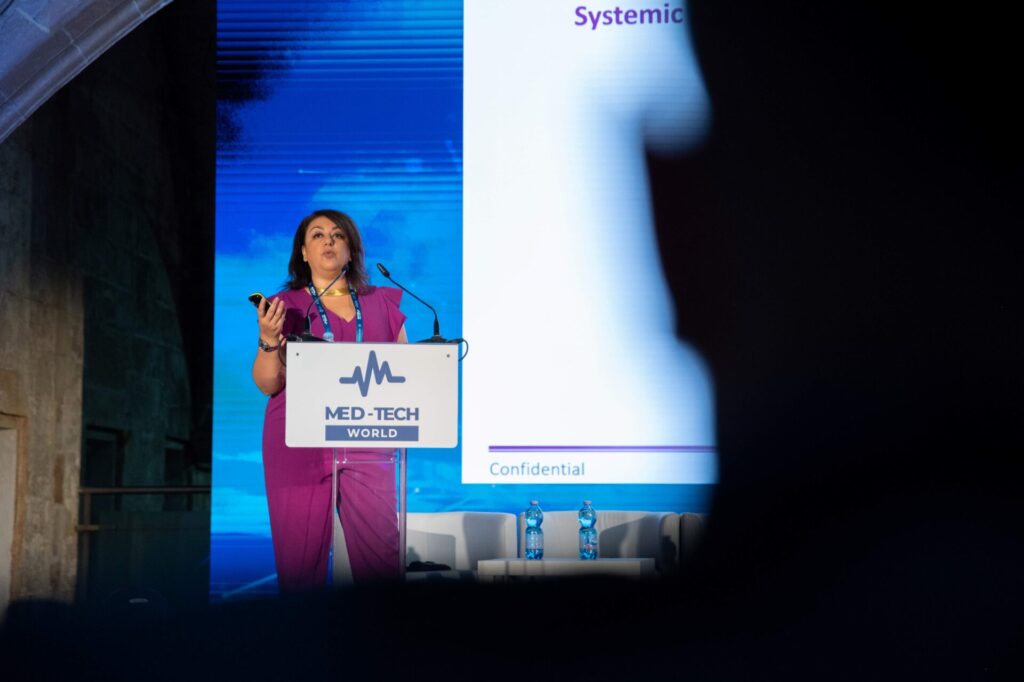
Digital tech should also cater for seniors
Equitable access to healthcare means getting seniors onboard with digital technology
Words by Dr. Ryan Grech and Dr. Dylan Attard, Clinical & Health Tech Advisors for MedTech World and two of the co-founders of Digital Health Malta.
In the previous article, Dr. Ryan Grech and Dr. Dylan Attard discussed the pivotal role virtual reality (VR) will play in patient and doctor medical education.
We are both fans of digital health. We love discussing it. We love promoting it. We love taking part in it. Recent reflection on how far we’ve come forward with digital in healthcare has made us realise something that we think needs to be addressed. Whilst most of the younger generation is born into technology, senior citizens are not and we must realize that not all of them are technology literate. It is a point of reflection that we think needs to be addressed as statistically they are the individuals who will need to make use of healthcare the most and we need to avoid a situation where the people who need healthcare the most end up being the ones least able to access it. The plot will always remain equitable access to healthcare.
Good or bad, COVID-19 has forced most seniors into tech more than ever before – not only for medical purposes but also for communicating with family and deal with isolation and loneliness. This shift did indeed start before COVID-19 but an important thing to remember is that during this pandemic most of these individuals lost their support network in tech – their children, grandchildren and friends. Therefore, whilst some were successful, for example, telemedicine access by seniors increased by 300% in the US, some might not have been so successful at doing so and appointments may have been missed, conditions not treated and mental health deteriorated significantly. Whilst the world has been writing about the success of technology we rarely mention the individuals it leaves behind and as much as we love healthcare we do not want technology to act as a barrier to healthcare access. This extends beyond telehealth. Robotic caregivers and AI companions are some of the future implementations which will greatly help seniors maintaining good health.
We have therefore come up with 3 main areas that governments and institutions need to work on in the immediate future to improve access and continue making healthcare as equitable as possible. Whilst the following can be probably applied to most industries we will be focusing mostly on how it affects healthcare provision.
Literacy
Teaching the elderly how to use technology is a good start. The saying goes, give a man a fish and you feed him for a day; teach a man to fish and you feed him for a lifetime. Educating willing seniors about technology and how to use said technology is going to be invaluable going forward. From accessing their healthcare records, organising appointments and even using one of the telehealth providers for an online consultation. Apart from opening a whole new world to them, we are lifting them to be on the same level as the younger generation whilst giving convenience to those who need it most. Education should be comprehensive and not stop at how to navigate and use services. Internet safety in this day and age is a must, things like creating strong passwords, trusting only reputable sources and understanding privacy settings are important to help individuals steer their way and avoid scams and disclosing personal information.
Infrastructure
Not everyone has broadband access and not everyone affords a laptop or smartphone. Teleconsultations and remote monitoring devices also need good stable and relatively fast connections to be able to function. The UK for example has already pledged to update all of its internet infrastructures.
Entities including government and health-tech companies should also keep the elderly in mind when designing their products. Whilst literacy is always important and that’s probably why we discussed it first we need to design equipment with the end-user in mind. The smartphone industry for example has managed that by designing phones with big screens, larger, easy-to-read fonts and simpler user panels.
Affordability is another issue in building the appropriate infrastructure. Wearables or assistive technology typically come with a high price tag and this is something that healthcare key stakeholders need to address. It should not break the bank to ensure good health.
Meanwhile, we should also cater for individuals who do not afford to purchase devices. There has been growing interest in telemedicine booths globally and most people see these in a good light especially in remote locations as it increases accessibility to healthcare including specialist services. These can be installed in public spots and kitted according to the population needs such as adding a pulse oximeter or blood pressure cuff that the patients can put on themselves to enhance the experience. Overall, it increases the accessibility of healthcare services to individuals (senior or not) who do not afford personal devices.
Analogue
It is one of life’s commandments that you will never be able to persuade everyone. And similarly, not all seniors will want to learn new tricks or else accept new technology in their houses. It is of utmost importance that we always keep these individuals in mind and whilst ensuring that they have access to healthcare, their “analogue” way of obtaining healthcare is integrated with the rest of the services to ensure that they do not miss out on appointments or treatment. It seems like we’re shooting ourselves in the foot but we should never discriminate and prejudice.
The points we mentioned above will never become obsolete. Education will always remain important in all age groups, infrastructure needs to constantly be updated and there will always be people who refuse to use technology. Apart from that, considering the demographic we just discussed, people who are now in their 70s were around fifty years old when the first iPhone came out. This highlights that perhaps the divide is not as bad as we make it seem and that most of the living western population is already accustomed to using smart devices. Similarly, we need to make sure that third world countries are not left behind and whilst we believe that digital will increase equitable healthcare there too, it’s a topic for another time.
See also by the authors: Virtual reality will play a pivotal role in patient and doctor medical education
you might also like
view all






